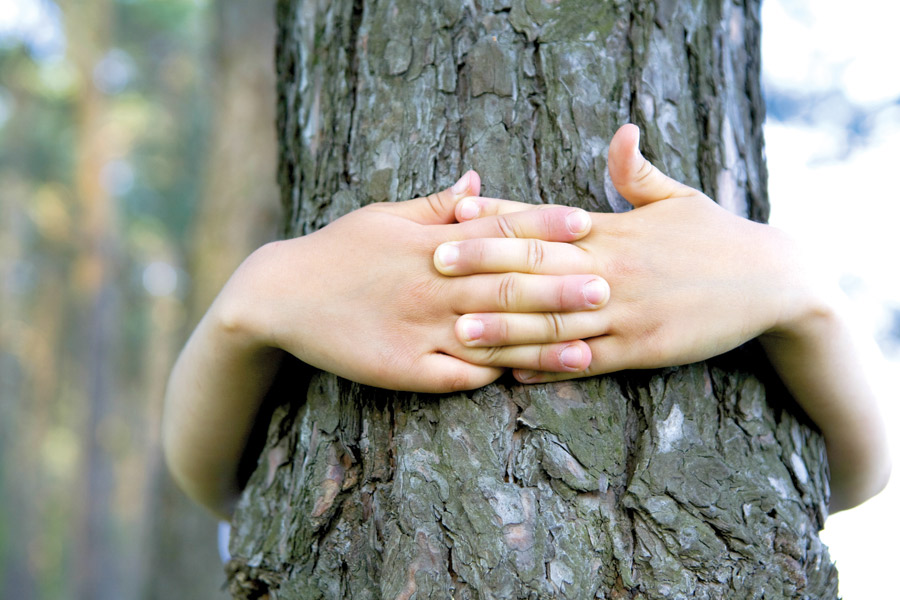We all want to help save the planet, but let’s face it: the litany of bad environmental news is beyond depressing. Climate change! Deforestation! Mass extinctions! Polluted air! Collapsing fisheries! Giant piles of floating plastic! It’s enough to make you throw out all your energy-efficient light bulbs, buy an Escalade, and drive to a fancy restaurant to dine on an endangered species, because why the heck not?
We understand the sentiment, but please, stay the course. Seemingly intractable problems can be tackled if we each break them down into manageable chunks and do our part. Below, experts present ten concrete steps everyone can take to improve the health of our delicate blue-green orb.
1. Reduce your energy consumption. As we all know, using energy drains natural resources and spews carbon into the atmosphere. But Kelly Martin, senior campaign representative for the Sierra Club’s Beyond Coal campaign, reminds us that cutting energy consumption isn’t that hard: run full loads of dishes in the dishwater and clothes in the washing machine, turn off unused lights (they are CFLs or LEDs, right?), unplug televisions and computers when you’re out of town, use high-efficiency appliances, have your house checked for energy leaks, use a programmable thermostat, and consider installing a solar electrical system.
2. Get political. Hold your local politicians accountable. “Our environment is better protected when we let our decision makers know that we care about our water and air and climate change,” Martin says. Visit websites like beyondcoal.org to learn how to cut pollution and push for renewable energy policies.
3. Downsize. Along the same lines, do you really require a McMansion and giant SUV? No, you do not. “Buy a house that’s only as big as you actually need and in a location that will allow you to use your car less,” says Julie Mayfield, co-director of the Western North Carolina Alliance. “Live simply. Part of the reason this country has such a huge environmental footprint is our rampant consumerism, so find a way to use less stuff.” The earth and your bank account will thank you.
4. Walk more. This one is simple to grasp but difficult to practice because of the blight of suburban sprawl. We know it’s not always possible to walk everywhere in modern America, but we’re pretty sure you can walk more than you do. “As often as you can, get out of your car,” Mayfield says. “Reducing the individual miles you drive is really important.” So instead of helping to fund another yacht for the president of a giant oil company, spend less on gas and get in shape.
5. Eat local and organic. The average distance that last night’s dinner meandered to get to your plate was 1,500 miles. That’s absurd—and unsustainable. Fortunately, you can do something about it by shopping at local farmers’ markets and grocery stores that offer less well-traveled food, Mayfield points out. As for eating organic, not only does it keep toxic pesticides from fouling your body, it eliminates the copious amount of energy required to apply them in the first place. And a lot of organic food really doesn’t cost that much in the scheme of things.
6. Clean up a river. Clean water brings life, and filthy water brings… well, best not to think about it. But consider this: restoring a polluted waterway can produce near-term, tangible results for the people, flora, and fauna that depend on it. “We do non-stop cleanups that are incredibly important,” says Karen Cragnolin, executive director of RiverLink in Asheville. “They provide immediate gratification and get you out to the water.” So volunteer for a project with Riverlink or the myriad other groups that focus on waterway restoration. Equipment and training are usually provided.
7. Build a greenway or restore a trail. Something else you can do with Riverlink and like-minded groups is help build a greenway—a long, narrow, vegetated piece of land that often borders a river and is managed for multi-access public use. In a similar vein, someone has to maintain the thousands of miles of trails that provide critical access to our national and state parks. Why not you?
8. Join a group. Matt Wasson, director of programs at Appalachian Voices, notes that it’s nearly impossible to stay on top of complex environmental issues without some help. That can come in many forms, one of which is e-mail lists. “If there’s something you care about, there’s just no way you can keep up if you don’t register with various groups’ lists,” he says. It’s not spam; it’s critical intel to inform your activism and feed your passion.
9. Get outside. At the same time, realize that if you sit at a desk all day and couch surf all weekend, that passion will die. Reignite it by staying active, says Pat Byington, executive director of Wild South. Seek out groups such as land trusts and hiking or biking clubs. Set an achievable goal, like one long bike ride per month. “Really comb the web for groups and activities,” Byington says. “There’s something to do everywhere.”
10. Inspire a child. Few things are more rewarding than watching a child develop a fervor for the outdoors. And if the next generation doesn’t step up, nothing we do will matter in the long run. So take the kids camping. Enroll them in scouting or the National Park Service’s Junior Ranger program. Open their eyes to the intricate beauty of a single snowflake. Inspire them, and they’re sure to return the favor.








